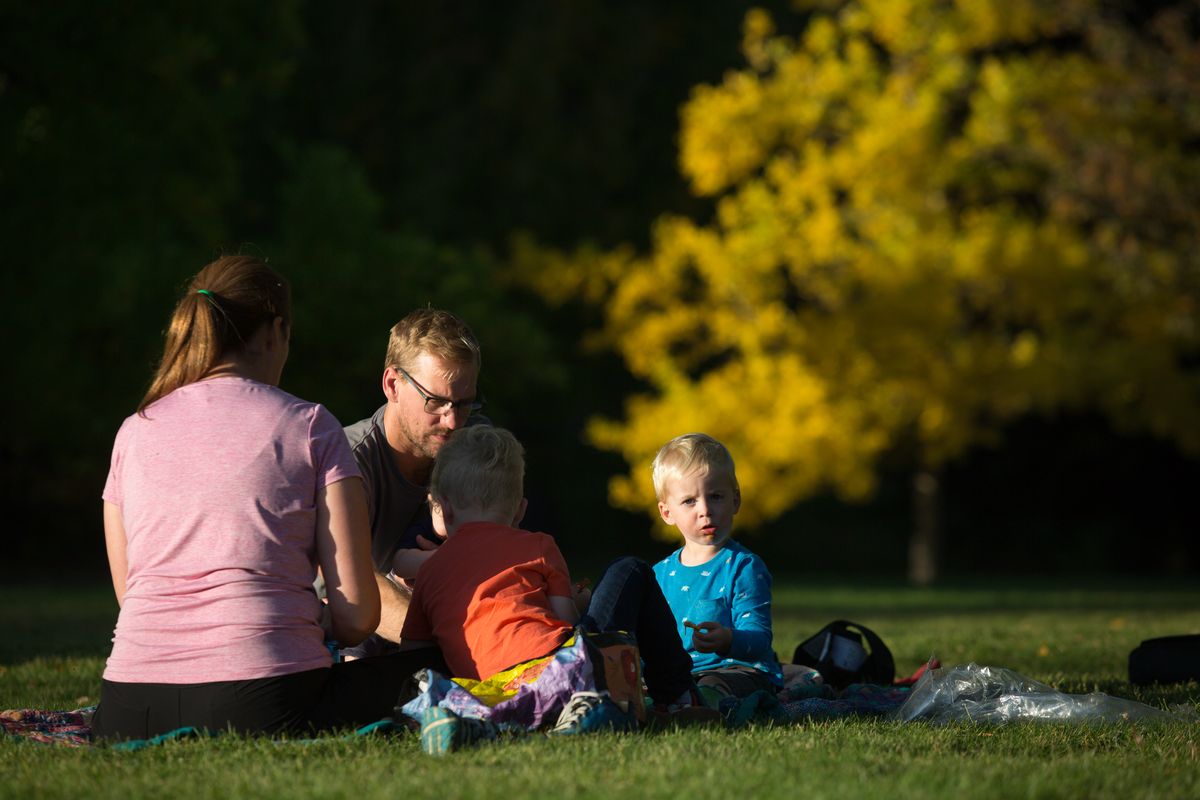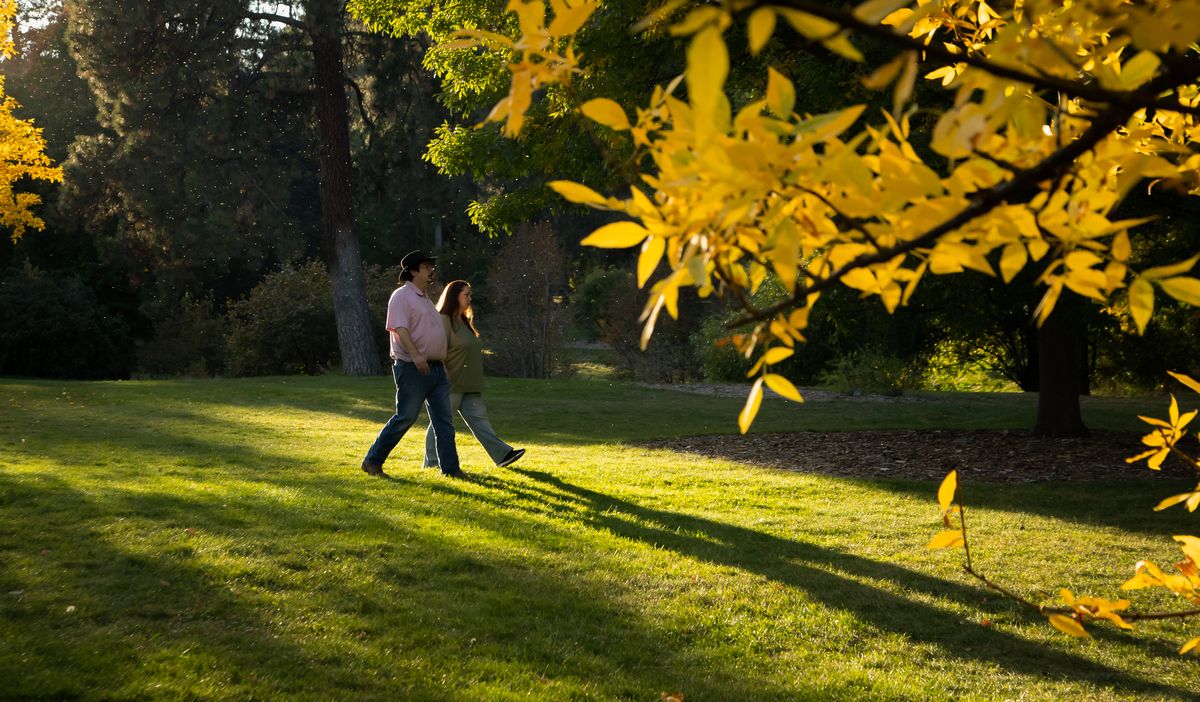Falling into fall: Where to go to view the area and season’s vibrant colors

Autumn glows in the Inland Northwest. You can thank our region’s variety of trees with their leaves morphing into vivid hues of yellow, orange and red – typically peaking mid-October.
And we have another bounty: Plenty of places for parents and kids to go on walking, biking or driving tours to view fall colors. The changing palette is on track here so far thanks to fairly ideal weather conditions this summer, sunny fall days, cool nights and – as of yet – no deep frost.
“We are so fortunate that we can grow just a really wide variety of tree species in our zone, so as an end result, we get a great diversity also with fall colors,” said Katie Kosanke, urban forester for the City of Spokane. Kosanke also is a certified arborist.

“We have had a lot of great sunny days and cooler nights, but it hasn’t been dropping down too far, so I think it’s shaping up to be a spectacular month, hopefully, of fall color.”
Families can gather a few fallen leaves for crafts while talking about the science behind these colors and seasonal changes.
You can enjoy such fall landscapes typically throughout this month, Kosanke said, but a bit of that depends on the species of trees and weather. The variety of trees in many of our local parks also adds to a canopy of contrasting fall colors from different trees planted near each other.
Although native trees are primarily evergreens, many Spokane areas have decades-old trees such as Norway maples, sugar maples, oaks and the London planetree, Kosanke said. “A lot of our streets have maple species.”
It can be fun to talk to kids about the different kinds of trees and the science behind why tree leaves turn colors.
Leaves get their green color from a chemical in their leaves called chlorophyll that helps the tree to take in sunlight used for photosynthesis, “which is how they create sugars, which is their food,” Kosanke said. “The chlorophyll that’s in the leaves hides the pigments of yellow, orange and red that are present in the leaves.
“In the fall, the trees stop producing chlorophyll, and it starts to break down, so it allows those other pigments to become more and more visible. The pigments do vary by species. The trees get their cues to start shutting down when the days start to be a little shorter and overnight temperatures are reduced. Light also influences that.”
This year’s Fall Leaf Festival won’t be held in person because of COVID-19, Kosanke said, but city employees are planning a virtual event with family fun ideas similar to Arbor Day. Details are still being worked out, but look up information at the Spokane Urban Forestry Facebook page for activities expected during the last week in October.
In the meantime, Kosanke and Visit Spokane list a few prime viewing spots in Spokane for fall:
Finch Arboretum. Spokane’s arboretum on 65 acres features more than 2,000 labeled ornamental trees. Located at 3404 W. Woodland Blvd., off West Sunset Boulevard, the site offers a self-guided walking tour of the tree collection, identifying spots to view such as a maple tree collection, dawn redwood, tri-color beeches and more.
City parks. Kosanke named a few fall favorites, especially for variety, including the parks Webster, Hays, Manito, Cannon Hill, Grant, Comstock and even the Esmeralda Golf Course. Comstock, for example, on the South Hill has one of Kosanke’s favorite’s in the fall: katsura trees that have a “wonderful yellow, almost apricot fall color.” The city’s online “park finder” lists sites and addresses.
Riverfront Park. The crown jewel of the city’s parks offers its own spectacular display of trees for autumn walking tours near downtown, although construction for upgrades is continuing and might impact some routes. An online construction map offers the best ways around redevelopment zones.
Iller Creek Trail. A 5-mile loop in Dishman Hills Conservation Area located in the Spokane Valley takes you past various fall colors on a trail that culminates at the Rocks of Sharon, large granite boulders on the hill’s ridgeline. From the rocks’ viewpoints, hikers can enjoy panoramic views of Steptoe Butte, Mica Peak and the Palouse.
The Centennial Trail. A variety of trees is tucked along this nearly 40-mile paved recreational trail for pedestrians and non-motorized vehicles. With views of the Spokane River, the trail stretches from Sontag Park in Nine Mile Falls to the Washington-Idaho state line. It continues another 24 miles beyond the Washington state border into Idaho as the North Idaho Centennial Trail through Post Falls and into Coeur d’Alene.
Green Bluff. Some of the community’s more than 30 farms are operating for fall festival time while following safety requirements under COVID-19. Find a U-Pick map and information on farms with family events at greenbluffgrowers.com while enjoying plenty of fall-filled scenery along the way.